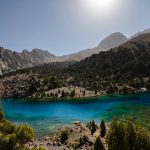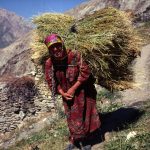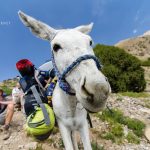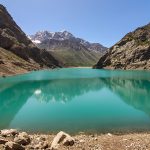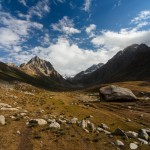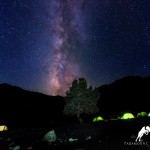Two millennia ago, Afghanistan was one of the wealthiest, most sophisticated, and culturally rich destinations on the Silk Road. Urban civilisation began here around 3,000 BC, and both Zoroastrianism and Buddhism flourished, as seen in the monumental Buddhist statues in Bamiyan. The mountains, then as now, were rich in copper, gold, iron ore, and precious stones, and yet more money came from the overland trade as merchants criss-crossed Afghanistan on their journeys between Iran, India, and China. Afghanistan’s wealth and strategically important position made it a hugely desirable object of conquest, and when Alexander the Great arrived in 300 BC, he and his forces laid the ground for a succession of Graeco-Bactrian Kingdoms. Afghanistan was at the very centre of the known world.
Scrolling forward to the 21st century, Afghanistan is not without its challenges. Its natural wealth and location are still fiercely fought over, and few tourists have ventured here since the heyday of the Hippie Trail in the 1970s. But the sights — for those fortunate enough to see them — are dazzling. The tiled mosques of Herat and Mazar-i Sharif are jewel-like, the Band-e Amir National Park is often described as Afghanistan’s Grand Canyon, and though the Buddhas of Bamiyan were destroyed by the Taliban in 2001, the site where they stood is nevertheless impressive. Once security in Kabul improves, the capital, too, will be a beguiling tourism spot thanks to the beautifully restored Babur’s Garden and museums.
There is one pocket of Afghanistan where tourism is already flourishing,and it is here that Paramount Journey takes our guests. It’s called the Wakhan Corridor. Easily accessed from southern Tajikistan, you can cross the bridge at Ishkashim, a town divided between the two countries.
The Wakhan Corridor is the narrow finger of land between the Hindu Kush, Karakoram, and Pamir mountain ranges. It juts out from the northeast of Afghanistan, just touching China at its tip. Protected by the mountains, this is the safest place to travel in Afghanistan. Remote and sparsely inhabited, the Taliban have no influence or presence here. The Aga Khan Development Network (AKDN) has therefore chosen the Wakhan as their primary focus for tourism development, and invested in building homestays and training local guides. It’s a wild and rugged heaven for mountaineers, climbers, and trekkers, and a jeep ride along the valley’s single, unmade road is a real adventure.
Paramount Journey’s The Wild Wakhan Corridor itinerary enables you to explore both the Afghan and Tajik sides of the border. In some places they are only a stone’s throw apart, but divided by the glacier-fed Panj River, which becomes the Amu Darya further downstream. It is an unrivalled opportunity to explore this harsh, dramatic landscape by jeep, visiting Wakhi villages and communities of Kyrgyz nomads who are completely cut off from the outside world for much of the year. You will see ancient petroglyphs carved by Silk Road travellers, ruined fortresses perched on rocky outcrops above the river, and holy shrines marked by the horns of ibex and Marco Polo sheep. This is not the Afghanistan you’ve seen on TV; it is a hundred times more wonderful and welcoming.






